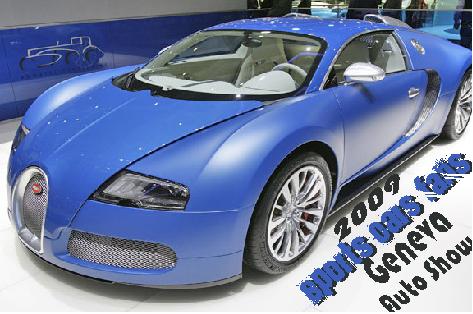First Drive: Chevrolet Volt powertrain mule

It's been 28 months since we watched Bob Lutz drive onto the stage at Cobo Hall in Detroit and step out of the Chevrolet Volt concept. In the intervening period, a corporate drama of epic proportions has transpired as Lutz has gone into semi-retirement, Rick Wagoner has been ousted as CEO and the U.S. government and the UAW are about to take a 90% ownership stake in General Motors.
In the midst of this corporate chaos, a dedicated group of hundreds of engineers, scientists, designers, technicians and drivers have tried to keep their heads down and out of the line of fire as they worked to make the Volt a production reality. From the time we first saw the original concept, GM has selected a battery supplier (LG Chem), defined the final powertrain configuration and released the production design, among countless other tasks. After more than a year of pestering GM, the call finally came to get behind the wheel of a Volt prototype.
We arrived at the design building on GM's tech center campus in the middle of a torrential downpour where we were escorted to the executive garage. There we found two of the 30+ second-generation Volt mules that are running around in Warren, Milford and other locations undergoing testing and development. Like their four-legged namesakes, mules are a cross-breed of different vehicles, and because of the lead times and testing required to bring a mass production vehicle to market, development is done in parallel on multiple paths. Automakers build these prototypes by taking an existing vehicle and adapting new components to road test the systems before the complete vehicle is ready for production.
For the Volt program, the first-generation powertrain mules were built using previous-generation Malibu body shells with the Voltec (E-Flex) powertrain -- the so-called Mali-Volts we first saw about a year ago. Those vehicles originally ran in late 2007, with the engine-generator and electric motor as well as a small hybrid battery to start development of the powertrain control system. Later, the full Volt T-shaped battery pack was installed and in 2008, the second-generation mules were built using the body of the new Chevy Cruze. Unlike the larger mid-size Malibu, the Cruze is based on the same Delta global compact platform as GM's plug-in savior, which is closer in size and weight to the Volt and was used throughout winter testing in 2008-2009.
Volt Vehicle Line Executive Tony Posawatz rode with us in the Cruze-Volt and discussed the current state of development. The prototype we drove had a powertrain that was about 80% representative of the final specification, and while the full powertrain was in place, including the 1.4-liter four-cylinder range extender, our time was spent in EV mode only.

Since the Cruze is close to the Volt, packaging the powertrain was less of a challenger than it would have been on a completely different platform. These cars were built up from early Korean-market Cruzes (hence the different grille) and are remarkably well finished. Setting aside the Volt powertrain for a moment, the Cruze seems like it will be an excellent competitor in the compact sedan segment. The interior is attractive and well laid out, and it's exceptionaly quiet inside.
In the garage, the cars were already running, sitting silently with the gear selector in park -- one of the wonderful things about electric drive -- and even though the Volt, like most other EVs, uses a single-speed reduction gear transmission, the shifter is still there to enable park, reverse, neutral and drive. The mules use the stock Cruze instrument cluster, but since the wiring harness was modified, some of the warning lights remained lit throughout our drive. Once we adjusted the seats and mirrors, and verified the warning lights weren't a problem, we moved the shifter into drive and "motored" off.
Out in the rain, we had to crank up the window defogger which, like all other accessory systems in the car, was electrical. Even though electric cars are considered to be quiet, older examples tended to produce whine from the drive motors (see: Dodge Circuit). GM and others have addressed this issue, and to our surprise there was no audible squeal inside the prototype.

The electrically-assisted steering has a nice heft that should make the production version an entertaining steer, although we couldn't judge it extensively on our wet "route" which consisted of two-mile laps on the tech center campus. The braking hardware, based on the system found in GM's two-mode hybrid SUVs, has a similarly firm and communicative pedal feel with no noticeable transitions between regenerative and friction braking. There were a few of minor glitches when we hit a major bump in the pavement while braking, but these will undoubtedly get sorted out as the final calibrations are completed over the course of the next year.
Power delivery is seamless and when the time comes to slow, lifting your foot off the accelerator yields a small amount of regen braking to simulate the coast-down on a conventional vehicle. The transmission shift lever also has a low gear position that induces more aggressive lift-off regen, about 0.25-0.30 g of deceleration -- equivalent to the braking most drivers regularly perform. When driving in stop-and-go traffic drivers could select L and just drive with one pedal much of the time, maximizing regenerative braking and range. According to Posawatz, future generations of electrically-driven vehicles could offer drivers different braking options, allowing them to select the amount of regen they want, but this won't be available on the first run of Volts.

Overall, the electric drive system in the mules performed as advertised and GM appears to be well on its way to meeting a November 2010 Job 1 date. We drove about ten miles in the rain on electrical energy only with plenty of accessories running and no significant problems. However, it's obvious there's a great deal of work to be done between now and the latter half of 2010. Right around May 27, GM will start final assembly of the Integration Vehicle Engineering Release (IVER) prototypes of the Volt; the final prototype stage where the production body work will be joined with nearly all the production-tooled compenents. These vehicles are used for final calibration and validation of all systems.
The bodies-in-white for the 75 IVER prototypes have largely been completed and once these vehicles are built, the engineers will start the final push toward finishing the first-generation Volt. Posawatz promised to have us back for another drive to sample the range-extender in action. Let's just hope that the Volt doesn't become a victim of the financial apocalypse currently afflicting General Motors.
[Source: Autoblog]















